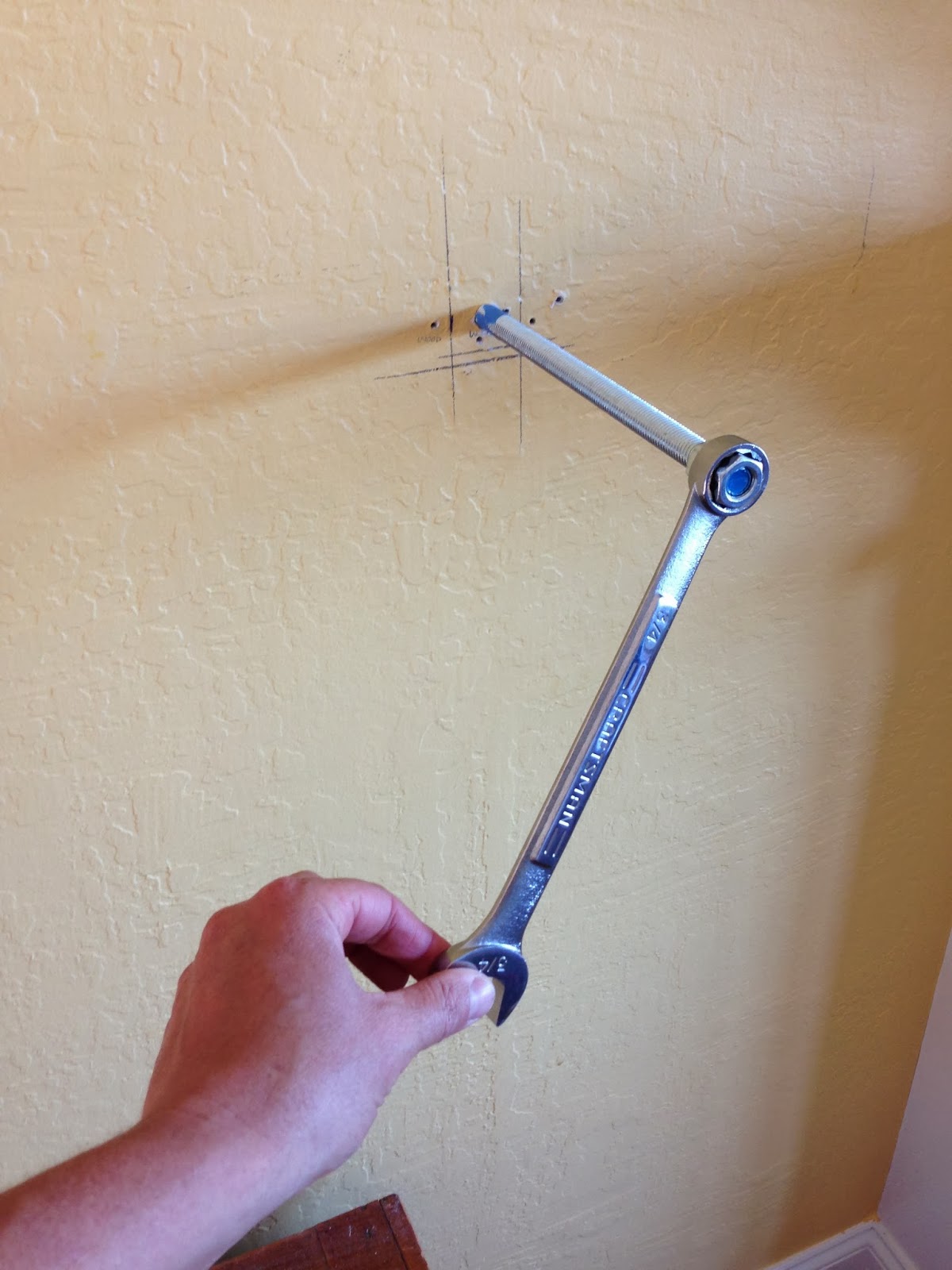This is a topic that is very different- I am sharing because I am proud of what I built, but more importantly, I am sharing because I could not find ANY other instructions on the web on how to do this and it really is quite simple when you do it this way.
I am talking about making a floating slab shelf- i.e. a thick piece of wood that does not have brackets to hold it up but is a solid shelf that you can put books on and other tschotskes.
I had a china cabinet that Cas and I used to put our various tschotskes from traveling etc that had sentimental appeal to us (READ: useless crap to which we are still too emotionally attached to dispense with). We have a small house and work hard to reduce clutter (i.e. useless crap to which we are still too emotionally attached to dispense with) but it still remains. The china cabinet was a huge, useless piece of furniture that only seemed to underline the fact that it housed useless crap to which we are still too emotionally attached to dispense with. My solution was to dispense with the china cabinet and get some wood slabs to make some shelves that would be pretty to look at.
I knew that it was possible to embed rods into the wall and then epoxy the shelves onto them. That knowledge was my starting point- but everything that I read online was for new construction where people had the walls open and were able to put on specially fabricated rods directly onto the studs, drywall around and then drill the shelves... blah blah it wasn't going to work for us.
Our house is pretty old and I was not about to open up the wall. Further challenging us was the fact that our electrical box was behind the wall so it was hard to find the studs- everywhere you hit was wood since there is so much blocking. This is how I came up with a solution.
First- get the slabs. I got our Black Oak slab as a 13' long slab from Evan Shively (Arborica in Marshall CA). It was a raw slab that I had them rip to 13" wide and planned it down at a friend's shop. I then just sanded it down (using a sanding "cup" bristle attachment on a drill bit to finish the "live edge"). I finished it with a mix of Tung oil, mineral spirits and polyurethane. Wanted a finish that looked natural and not polished but that would protect.
Next- mount the slabs.
Step ONE: find the EXACT center of your studs. In our case, with all the blocking, I found the studs at the top and bottom of the wall and then worked down. To find the exact center, I used a dry wall saw to cut into the dry wall near the stud until I found an edge. I patched and painted the holes later.
 |
| This is how I found the EXACT center of the stud. You do NOT want to mis-drill. |
 |
| The board serves as a mock up of where you want to put the shelf and then as a guide for your dowling jig and then as a template for drilling the back of your shelf. |
 |
| We wanted our shelves to be offset from each other to give it a more wabi sabi look and allow for taller objects. |
Step THREE: Use a dowling jig to mount onto the 3/4" strip and drill with a 7/16" bit into the stud. The jig makes you drill exactly perpendicular to the wall without mistakes. I think that I drilled 3" into the stud (plus room for the drywall), but I can't remember exactly now. I had made a mockup wall and practiced on the fake wall first since I didn't want to do structural damage to our house.
 |
| Close up of the Dowling Jig |
Step FIVE: Take 12" 1/2" threaded rod and place two 1/2" nuts as a jam on the end to help you screw it in. The 7/16" hole is the exact right size to screw the rod into the stud- use the jammed nuts as a head to screw with.
 |
| Use two nuts to jam into a head to get a wrench on in order to screw it into the wall. |
 |
| Use the nuts to screw the rod into the stud. |
 |
| LOOK MA! NO brackets! |
 |
| Black Oak with a "live edge"- not a milled face. |
 |
| We have since further purged some of our tschotskes, a perpetual process. |

No comments:
Post a Comment